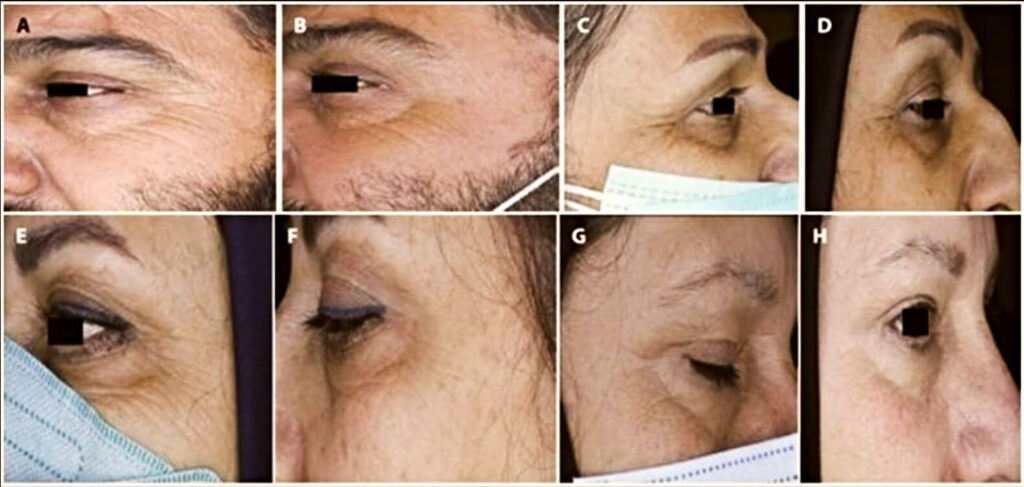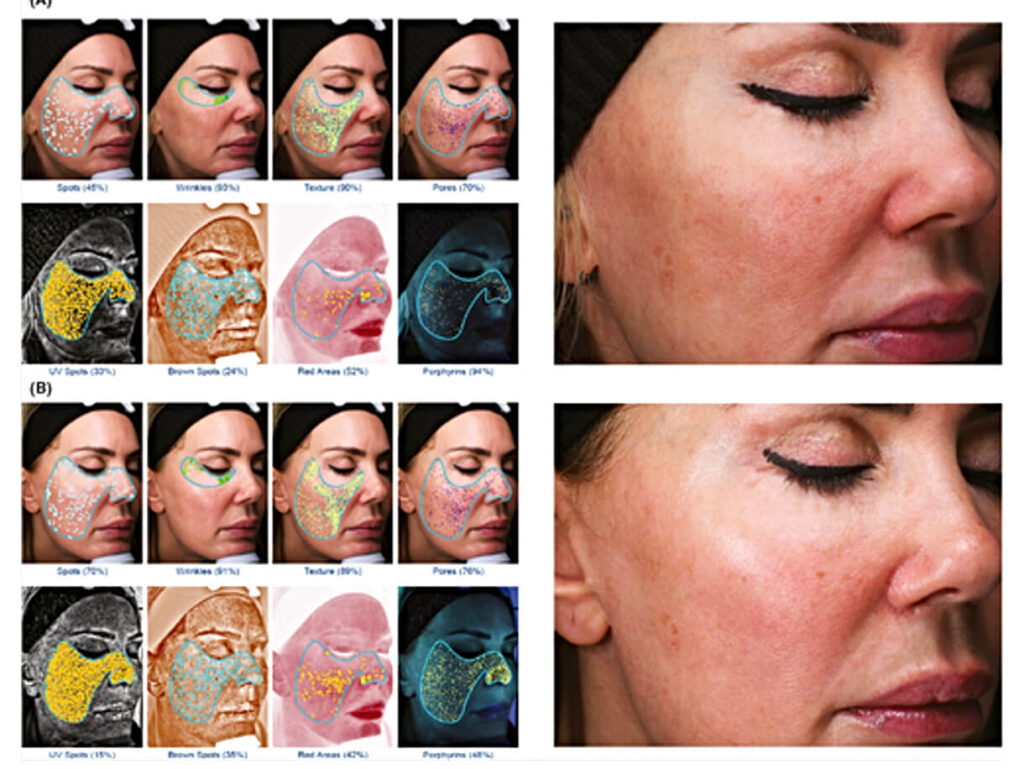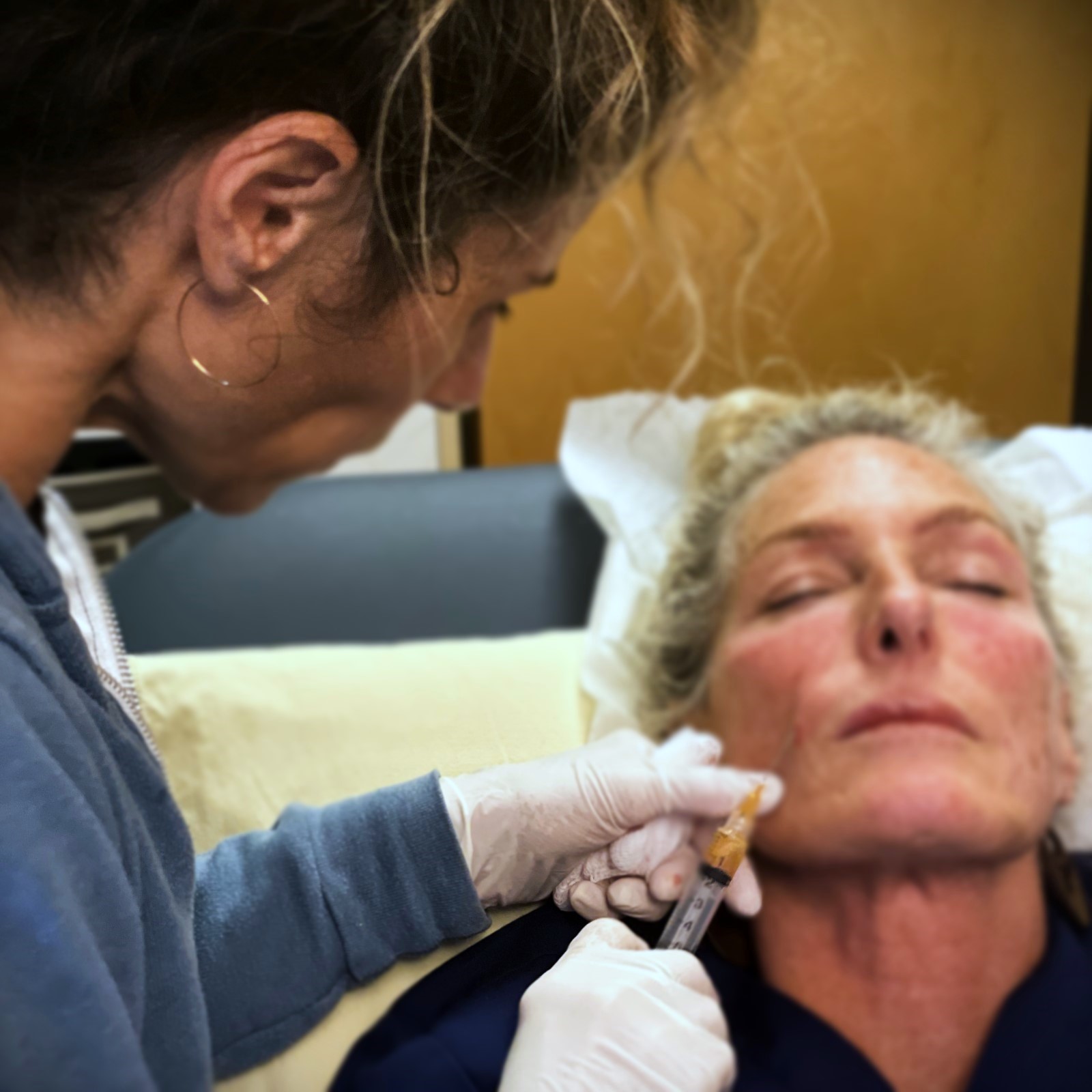Have you noticed your skin sagging from volume loss, increased pore size or hyperpigmentation? Do you have a dull, dry complexion? Conventional fillers are outdated. You can now choose a fantastic natural alternative: Platelet-rich fibrin (PRF).
Historically, PRF has been used in wound care and oral surgery settings to function as a sealant or glue. This “glue” helps to control bleeding and accelerate the healing process. Within the last several years, the unique characteristics of PRF have expanded for use in dermatology to rejuvenate skin.
So what is PRF and how can it rejuvenate the skin?
Fibrin is a component in your blood whose primary role, as stated, is to regulate bleeding. It performs this role by first forming a clot. These fibrin clots can be present for weeks or months depending on the area being healed. After the area is restored, the clot dissolves.
When we process your blood plasma we can concentrate the growth factors contained in the fibrin. Upon being injected into your skin, the fibrin adheres to the area treated, creating an autologous graft. Over a 7–10-day period, the fibrin slowly releases growth factors1. These growth factors attract stem cells to your dermis and increase collagen synthesis, thickening and restoring volume, and are anti-inflammatory and increase blood vessel formation.
Concurrently, the elastic composition of the clot matrix makes your skin have a smooth, tight look. In the weeks to months following your injections, your body builds upon this scaffolding made by the clot, producing more collagen volume.
This process is evident in a 2023 study that injected 16 participants around their eyes. The participants were both male and female over the age of 30. They assessed the results twelve weeks after only one injection. What they saw was a significant reduction in deep and fine lines, reduction in skin pigmentation and an overall refreshed look2. (See Image 1)

In a 2020 study involving 11 research subjects over the age of 33, the cheeks, nasolabial areas and the areas above their lips were injected. Everyone in the study received three separate PRF injections, four weeks apart. In a third-party questionnaire, participants were overwhelmingly satisfied with their injections for skin spots, wrinkles, texture and pore size3. (See Image 2)

For those of us repairing from a summer of increased sun exposure or for areas that need a little love, our own body once again comes to the rescue with platelets. PRF acts as a natural stimulant, prompting your body’s healing mechanisms to kick into action and rejuvenate damaged skin. The growth factors and other bioactive components in PRF promote tissue repair, collagen production, and improved blood circulation. PRF can reverse the signs of sun-induced damage and restore a more youthful, radiant complexion. So, when the effects of summer or areas in need call for revitalization, PRF offers a holistic, self-powered solution, letting your body’s own healing abilities shine through.
Dr. Stacey Guggino, ND, LAc graduated from the National College of Natural Medicine in Portland, Oregon with a Doctorate in Naturopathy and a Master’s degree in Oriental Medicine. For the past 12 years, she has specialized in treating pain and sports injuries with acupuncture and prolotherapy. Dr. Guggino has also studied and practiced aesthetic medicine for 11 years.
Sources
- Dashore S, Chouhan K, Nanda S, Sharma A. Platelet-Rich Fibrin, Preparation and Use in Dermatology. Indian Dermatol Online J. 2021;12(Suppl 1):S55-S65. Published 2021 Nov 25. doi: 10.4103/idoj.idoj_282_21
- Mahmoodabadi RA, Golafshan HA, Pezeshkian F, Shahriarirad R, Namazi MR. Evaluation of the Effect of Platelet-Rich Fibrin Matrix in the Correction of Periorbital Wrinkles: An Experimental Clinical Trial. Dermatol Pract Concept. 2023;13(1):e2023050. Published 2023 Jan 1. doi:10.5826/dpc.1301a50
- Haidar Hassan DDS, MRCPS, MSc, PhD, Daniel J. Quinlan MBBS, Ali Ghanem MD, FRCS, MSc, PhD. Injectable platelet-rich fibrin for facial rejuvenation: A prospective, single-center study. Journal of Cosmetic Dermatology. December 2020. doi: 10.1111/jocd.13692



